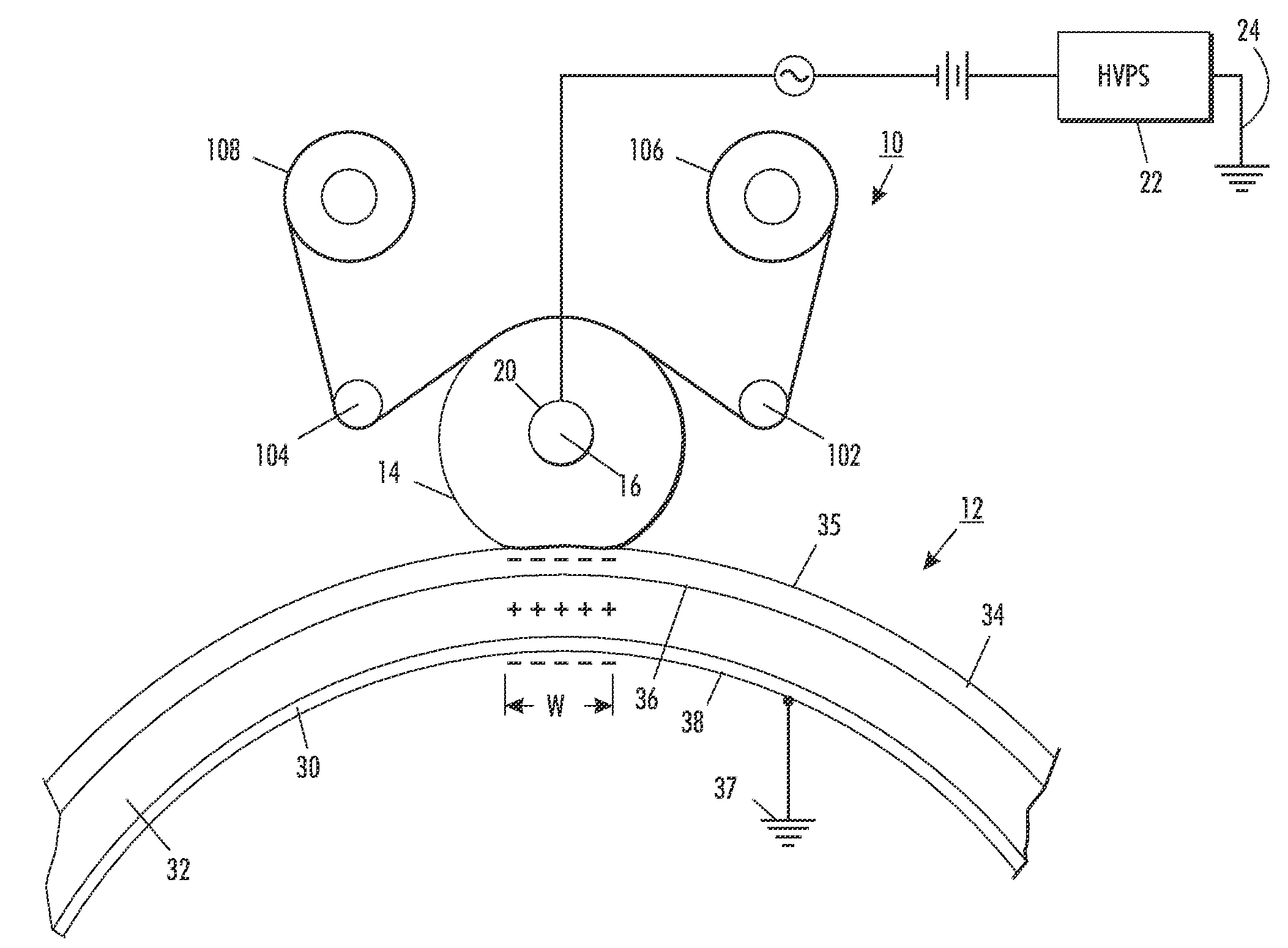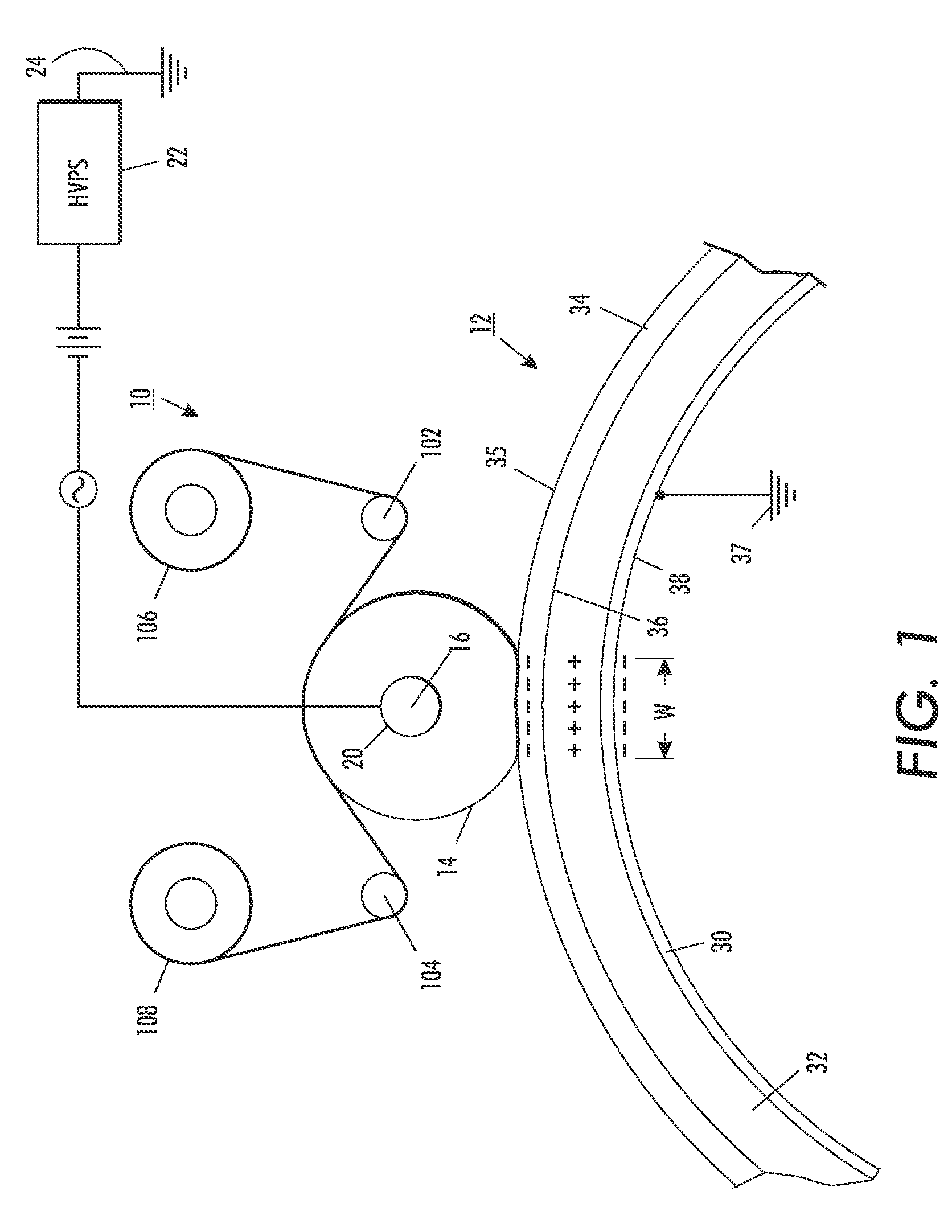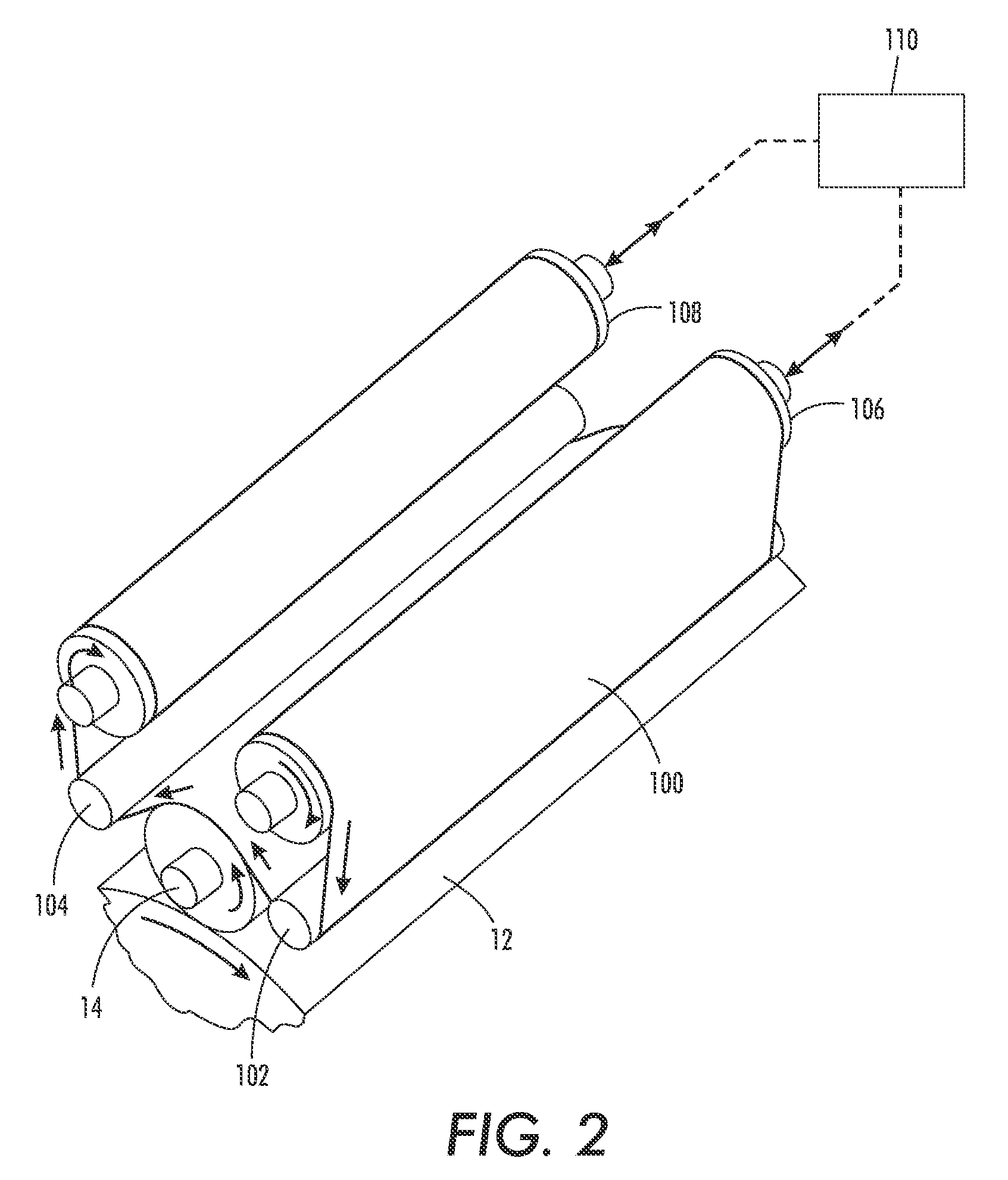Web fed charging roll cleaner
a cleaning roll and charging roll technology, applied in the field of rolling equipment, can solve the problems of dc voltage attracted dirt, failure mode of xerographic system using bias charging roll (bcr) architecture, and the development of rolling charging systems such as bcr's and btr's with limited success, and achieves uniform photoreceptor charge uniformity, less wear and chemical interaction, and less sensitivity to toner and additive contamination.
- Summary
- Abstract
- Description
- Claims
- Application Information
AI Technical Summary
Benefits of technology
Problems solved by technology
Method used
Image
Examples
Embodiment Construction
[0015]For a general understanding of the present invention, reference is made to the drawings. In the drawings, like reference numerals have been used throughout to designate identical elements.
[0016]It will be recognized, that while the present invention describes a charging system for a typical BCR used in an electrostatographic printer, embodiments of the present invention are equally well suited for use in a wide variety of other electrostatographic-type processing machines, in BTR applications, and in other applications in which uniform charges are to be placed upon moving surfaces. The disclosed invention is not limited in its application to the particular embodiment or embodiments shown herein. In particular, it should be noted that the charging apparatus of the present invention, described with reference to an exemplary charging system, may also be used in a transfer, detack, or cleaning subsystem of a typical electrostatographic apparatus since such subsystems may also requ...
PUM
 Login to View More
Login to View More Abstract
Description
Claims
Application Information
 Login to View More
Login to View More - R&D
- Intellectual Property
- Life Sciences
- Materials
- Tech Scout
- Unparalleled Data Quality
- Higher Quality Content
- 60% Fewer Hallucinations
Browse by: Latest US Patents, China's latest patents, Technical Efficacy Thesaurus, Application Domain, Technology Topic, Popular Technical Reports.
© 2025 PatSnap. All rights reserved.Legal|Privacy policy|Modern Slavery Act Transparency Statement|Sitemap|About US| Contact US: help@patsnap.com



